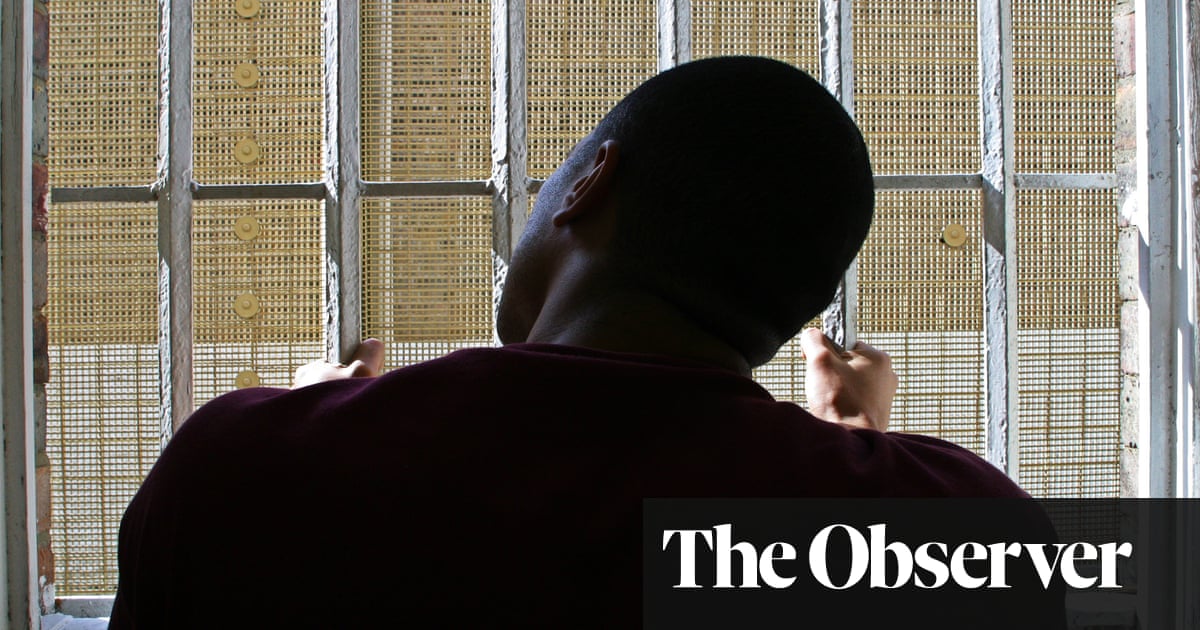
Her week began by pulling a man down from a homemade ligature and performing CPR to keep him alive. Days later, Alex South saved another inmate found hanging in his cell. And the working week ended with the prison officer rescuing a third prisoner who had tightened a noose around his neck.
In between – deep within the towering red-brick walls of Wormwood Scrubs – she dealt with several serious self-harm incidents each day.
“In the moment you don’t really feel anything. You’re aware it’s a strange thing to be dealing with, but the frequency with which it was happening means your focus is on saving lives,” she says.
South had entered the prison service in her early 20s hoping to make a difference, believing an effective penal system could change lives.
Yet inside the 148-year-old jail, South found herself locked in an unrelenting battle to save those who had concluded there was no point in leaving the Victorian building alive.
Men would frequently cut their wrists on broken windows in decrepit cells. Overcrowding meant that even those known as prolific self-harmers were locked inside such glaringly dangerous environments.
“You have to try to switch yourself off, otherwise you’ll never go into work,” said South, who recently left the prison service, disillusioned by rising levels of violence, staff shortages and self-harm. Since her departure, this has not improved.
Days ago, the Ministry of Justice revealed that in the first quarter of 2023 it recorded 16,543 self-harm incidents, a 12% rise on the previous three months – or one every eight minutes. In women’s prisons, self-harm incidents are at record levels, 11 times higher than in men’s jails.
And an Observer investigation today reveals a sharply deteriorating picture across the prison system, with three-quarters of jails in England and Wales now having unsatisfactory standards in at least one respect. More than a third were deemed to be insufficiently safe.
South often thinks about the embattled colleagues she has left behind, saying the conditions in which officers are required to work would stun the public.
“I worked with people with the most acute emotional intelligence, the ability to read a room, to detect really subtle shifts in atmosphere,” she says. But the daily grind of violence and trauma could corrode even the most optimistic.
“Anyone going into that environment will struggle. I’ve watched people just fall apart.”
A survey of 6,582 prison staff by the parliamentary justice committee, published last month, found that half of all prison officers in England and Wales do not feel safe in their jail.
Corroborating such concerns is new government data showing assaults on staff rising sharply. Almost 8,000 were attacked in the year to March 2022.
“Can you imagine going to work each day and not feeling safe? People can’t look after others if they themselves don’t feel safe,” said South, now 33. During her 10 years inside the prison estate, South observed the deepening impact of austerity, in particular the cycle of falling staffing levels leading to increased violence as prisoners grew more frustrated, which, in turn, prompted more officers to leave.
“Austerity made the job very difficult to do. No one joins the prison service because they just want to lock and unlock doors.”
The justice committee is currently investigating workforce pressures in jails at a time the prison population is rising faster than capacity.
Concern over surging inmate numbers last week moved the chief inspector of prisons, Charlie Taylor, to take the unusual step of posting an online article warning that the issue has “consequences for all of us”.
Special measures under an emergency programme called Operation Safeguard – where prisoners are held in police cells because there are no free jail cells – were now routine in parts of the country, said Taylor.
At the same time entire prison wings, he added, were being closed because there were too few officers to “run a regime safely.” In short, the service had moved from dysfunctional to failing.
South’s first posting – before austerity had begun to bite – was Cambridgeshire’s maximum security prison, Whitemoor, where she encountered a functioning, well-resourced facility.
Despite Whitemoor holding a large number of dangerous inmates, South witnessed just three violent incidents during her stint there. By the time she arrived at Wormwood Scrubs in 2016, the impact of reduced resources was plain to see. There, she witnessed hundreds of such acts. Violence had become “normalised”. Dysfunction permeated every aspect of prison life.
South clung to the hope that, for some at least, prison would prove to be a turning point. Yet she came across individuals desperate to escape a life of crime, but who would be denied a fresh start.
She recalls a violent London gang member who was a gifted writer. South would ask him to pen responses to letters in the Guardian – and would be amazed by his articulacy.
But as his release date neared, he began dreading it. “He was getting released to the exact same area, where wrong had been done to him and he wronged other people.”
“Someone can have this real internal motivation to change and you can have lots of long chats with them if you have the time, but if you just release them back into the same area, nothing changes.”
He is back inside, convicted of involvement in a high-profile shooting.
Yet despite the escalating problems facing prisons, South remained hopeful the system could be improved. In 2017, South was awarded a Churchill fellowship and began a global tour of prisons, mental health and criminology institutions to learn how UK jails might improve.
She travelled to Canada, the US and Australia, and upon return sought a meeting with the then prisons minister – whom she does not want to name – to share her suggestions, which included more officer training and annual mental health checkups. The minister dismissed South’s solution as “fluffy things to keep prison officers happy”. She left “feeling very deflated and a bit stupid”.
But she was also struck by the contrast between his Ministry of Justice office and her own squalid, threatening workplace.
“It was very modern with views of the city, an incredible skyline. I had come from a place where there’s rats and cockroaches everywhere, where the windows are smashed.
“At the time we were getting emails asking for experienced staff to bring in any spare uniform because they didn’t have enough to supply the new staff. It emphasised that we were operating in different worlds.”
South, whose recent book Behind These Doors chronicles her experiences, says she is speaking out because people still have no idea how dreadful prisons are and how, instead of being rehabilitated, many inmates leave broken. “You’re watching a real decline in people’s mental health along with a real spike in violence or drug taking.”
She remains haunted by vulnerable people who had been exploited by criminals outside, only to face fresh exploitation inside.
Men who first came in for relatively minor offences would return as murderers. Others would be released on a Friday only to return on Monday. Almost 40% of ex-inmates reoffend within the first 12 months, data shows.
Did she ever wonder what families would think if they could see the conditions their loved ones endured? After a long pause, she says: ”It’s heartbreaking.”












